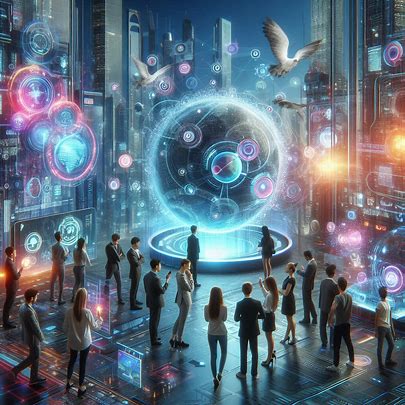
Introduction
Imagine watching a movie where a character’s face is seamlessly swapped with another actor, hearing a song sung by a virtual artist, or seeing an advertisement tailored perfectly to your interests—all created by artificial intelligence. This is the world of synthetic media, a rapidly evolving technology that uses AI to generate or manipulate digital content, such as images, videos, audio, or text. From hyper-realistic deepfakes to personalized marketing, synthetic media is reshaping entertainment, communication, and creativity. This article explores what synthetic media is, how it works, its real-world applications, current trends, and its potential to transform our digital landscape, all explained in an engaging and accessible way.
What is Synthetic Media?
Synthetic media refers to content created or altered by AI algorithms, often so realistic that it’s hard to distinguish from human-made or authentic material. Also known as generative media, it includes deepfakes, AI-generated art, synthetic voices, and more. Unlike traditional media production, which relies on human effort and physical tools, synthetic media leverages AI to automate and enhance content creation.
Key Types of Synthetic Media
- Visual Media: AI-generated or manipulated images and videos, like deepfake videos or AI-designed artwork.
- Audio Media: Synthetic voices or music, such as AI-cloned speech or computer-composed songs.
- Text Media: AI-generated text, including articles, stories, or chatbot responses.
- Hybrid Media: Combinations of the above, like a video with AI-generated visuals and voiceovers.
For example, when you see a viral video of a celebrity “saying” something they never said, it’s likely a deepfake created using synthetic media techniques.
How Synthetic Media Works
Synthetic media relies on advanced AI models, particularly generative AI, to create or modify content. Here’s a simplified overview:
- Data Collection: AI models are trained on vast datasets, such as images, videos, or audio clips, to learn patterns (e.g., facial movements or speech tones).
- Model Training: Generative algorithms, like Generative Adversarial Networks (GANs), create new content by pitting two neural networks against each other—one generates content, the other evaluates its authenticity.
- Content Generation: The trained model produces or manipulates content, such as swapping faces in a video or generating a realistic voice.
- Refinement: Post-processing ensures the output is polished and realistic, often requiring minimal human intervention.
- Deployment: The synthetic content is used in applications like films, apps, or advertisements.
For instance, creating a deepfake involves training a GAN on thousands of images of a person’s face, allowing the AI to map their features onto another video, producing a seamless result.
Real-World Applications of Synthetic Media
Synthetic media is transforming industries by enabling creative, efficient, and personalized solutions.
Entertainment and Media
In filmmaking, synthetic media creates realistic visual effects or de-ages actors, as seen in Star Wars where Luke Skywalker’s younger face was generated using AI. AI-composed music, like that from platforms like AIVA, is used in commercials and games, reducing production costs.
Advertising and Marketing
Brands use synthetic media to create hyper-personalized ads. For example, AI can generate tailored video ads featuring a viewer’s name or preferences, as seen in campaigns by companies like Coca-Cola. Synthetic models, like those from Meta’s AI tools, replace human actors in ads, saving time and budget.
Education and Training
Synthetic media enhances learning by creating immersive simulations. Medical students use AI-generated virtual patients to practice diagnoses, while language apps like Duolingo employ synthetic voices for realistic pronunciation exercises.
Gaming
Game developers use synthetic media to generate dynamic worlds, characters, or dialogue. NVIDIA’s DLSS technology uses AI to enhance graphics in real-time, while AI-driven NPCs (non-player characters) in games like Cyberpunk 2077 adapt to player actions.
Social Media and Content Creation
Platforms like TikTok and Instagram leverage synthetic media for filters that alter faces or voices. Tools like DALL-E or Midjourney allow users to create stunning AI-generated art for posts, democratizing creativity.
Every major story has impact — know how to read the news like a trader in our finance section.

Current Trends in Synthetic Media
As of June 2025, synthetic media is advancing rapidly, driven by AI breakthroughs and growing adoption. Here are key trends:
Improved Realism
New AI models, like advanced GANs and diffusion models, produce hyper-realistic content. Tools like Runway’s Gen-2 create videos indistinguishable from real footage, enhancing applications in film and advertising.
Ethical AI Frameworks
Concerns about deepfakes and misinformation are driving ethical guidelines. Organizations like the Partnership on AI are developing standards for transparent synthetic media, such as watermarking AI-generated content.
Real-Time Generation
Real-time synthetic media is emerging, enabling live applications. For instance, NVIDIA’s Maxine platform uses AI to enhance video calls with synthetic backgrounds or translated speech in real-time.
Multimodal AI
Multimodal models, like those from OpenAI, combine text, images, and audio to create cohesive synthetic media. This allows for seamless content, such as a video with AI-generated visuals, narration, and music, all from a single prompt.
Accessibility and Democratization
User-friendly tools like Canva’s AI features or Adobe’s Firefly make synthetic media accessible to non-experts. This empowers small businesses and creators to produce professional-grade content without expensive resources.
Benefits of Synthetic Media
Synthetic media offers compelling advantages:
- Creativity: Enables innovative content creation, from AI art to virtual influencers.
- Cost Efficiency: Reduces production costs by automating tasks like video editing or voiceovers.
- Personalization: Delivers tailored experiences, enhancing engagement in marketing and education.
- Scalability: Produces large volumes of content quickly, ideal for global campaigns.
- Accessibility: Democratizes content creation, allowing anyone to produce high-quality media.
Challenges of Synthetic Media
Despite its potential, synthetic media faces significant hurdles:
- Misinformation and Deepfakes: Malicious use of deepfakes can spread false information or harm reputations, as seen in viral fake videos of public figures.
- Ethical Concerns: Issues like consent (e.g., using someone’s likeness) and transparency require clear regulations.
- Bias in AI Models: Training data can perpetuate biases, leading to skewed or offensive content.
- Legal Issues: Intellectual property disputes arise when AI generates content based on copyrighted material.
- Detection Challenges: Distinguishing synthetic from real media is increasingly difficult, necessitating advanced detection tools.
Addressing these requires robust ethical frameworks, detection technologies, and public awareness.
The Future of Synthetic Media
Synthetic media is poised to redefine creativity and communication by 2030:
- Immersive Entertainment: Films and games will feature fully AI-generated characters and worlds, blending seamlessly with reality.
- Personalized Education: Synthetic media will create tailored learning experiences, like virtual tutors or interactive simulations.
- Virtual Influencers: AI-generated influencers, like Lil Miquela, will dominate social media and advertising.
- Global Communication: Real-time translation and synthetic voiceovers will break language barriers in global interactions.
Investment in ethical AI, detection tools, and education will ensure synthetic media is used responsibly and inclusively.

Conclusion
Synthetic media is revolutionizing how we create and consume digital content, blending AI’s power with human creativity. From Hollywood films to personalized ads, its applications are vast, offering efficiency, innovation, and personalization. As trends like real-time generation, multimodal AI, and ethical frameworks shape its evolution, synthetic media promises a future where digital experiences are more immersive and accessible than ever. By addressing challenges like misinformation and bias, we can harness synthetic media to empower creators and connect the world in exciting new ways.
Word count: 1000




